 W
WAlison's blue devil, Paraplesiops alisonae, is a species of fish in the longfin family Plesiopidae. It was described in 1984 and named for Alison Kuiter, Rudie Kuiter's wife because he said that she saw the species first. It has a brown head and body with iridescent blue spots on the head. It has been recorded from various sites in southern Australian waters, including Port Phillip in Victoria, northern Tasmania and Tasmanian islands in Bass Strait, Kangaroo Island, and Victor Harbor in South Australia.
 W
WAntipodocottus elegans or the dwarf sculpin is a species of sculpin in the family Cottidae. Most commonly found in the benthic zone around depths of 400 meters, A. elegans is found almost exclusively near Wollongong in New South Wales, Australia.
 W
WAustrolebias arachan is a species of killifish from the family Rivulidae. It has only been recorded from Uruguay. This species was described in 2004 with the type locality given as a pond in Cerro Largo province, the specific name being a reference the natives of that province, the Arachán.
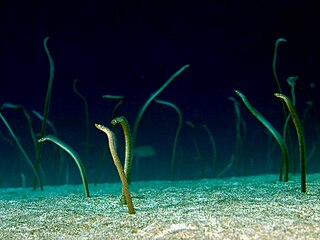 W
WThe Barnes' garden eel is an eel in the family Congridae. It was described by Bruce H. Robison and Thomas M. Lancraft in 1984. It is a marine, tropical eel which is known from the western Pacific Ocean, including Indonesia, the Philippines, Vanuatu, the Solomon Islands and Papua New Guinea. It dwells at a depth range of 5 to 20 metres, and inhabits sand substrates. Males can reach a maximum total length of 121 centimetres (48 in).
 W
WBetta edithae is a species of gourami endemic to Indonesia where it occurs in Kalimantan, Sumatra and the Riau Archipelago. This species grows to a length of 8.2 cm (3.2 in), and can be found in the aquarium trade. The specific name honours the German aquarist Edith Korthaus (1923-1987), who co-discovered this species with her husband Walter. Walter is honoured in the specific name of another species they discovered, Betta foerschi.
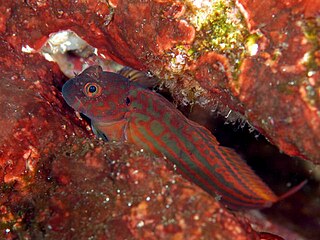 W
WCirripectes kuwamurai is a species of combtooth blenny found on rocky and coral reefs in the northwest Pacific ocean off Japan. This species reaches a length of 5.5 centimetres (2.2 in) SL. The specific name honours the Japanese fish ecologist Tetsuo Kuwamura who collected the type.
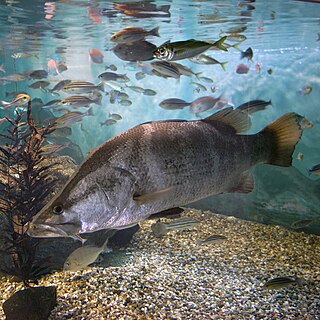 W
WThe Japanese lates, also known as the akame or Japanese barramundi, is a species of fish found in Japan. A bottom-dweller restricted to estuarine habitats and large rivers in the coastal eastern parts of the country, it is threatened by habitat destruction. As it is similar to the related barramundi, it was classified as the same species until 1984.
 W
WThe Japanese velvet dogfish is a harmless deepwater sleeper shark of the family Somniosidae, found in the northwest Pacific from Suruga Bay and adjacent waters of Japan at depths of between 500 and 800 metres. Reproduction is ovoviviparous.
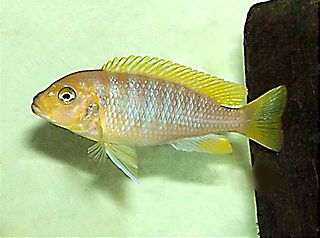 W
WMaylandia hajomaylandi is a species of cichlid endemic to Lake Malawi where it is only known from around Chisumulu Island. This species can reach a length of 12 centimetres (4.7 in) TL. It can also be found in the aquarium trade. The specific name honours the cichlid enthusiast and author about aquaria Hans Joachim Mayland, who died in 2004,
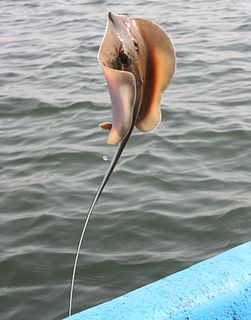 W
WThe pearl stingray is a little-known species of stingray in the family Dasyatidae, found in shallow coastal waters from Mauritania to Angola. Growing to 30 cm (12 in) across, this species has a rounded pectoral fin disc with a pointed snout, and a wide band of dermal denticles over the back in adults. It closely resembles and is often confused for the much larger daisy stingray ; both species are characterized by the presence of an enlarged, nacreous denticle in the middle of the back called a "pearl spine". The International Union for Conservation of Nature (IUCN) does not yet have enough information to assess the pearl stingray's conservation status, but it is likely that most of the historically reported fishery catches of the daisy stingray were in fact of this species.
 W
WThe pocket shark is a species of kitefin shark in the family Dalatiidae. The species is found in deep water off Chile in the southeastern Pacific Ocean. It was the only member of the genus Mollisquama, until another species, M. mississippiensis, was discovered in the Gulf of Mexico. Both species are distinguished from other sharks by two pockets next to the front fins. The pockets are large, measuring about 4% of the shark's body length. Some researchers hypothesize that the pockets may excrete some kind of glowing fluid or pheromones.
 W
WThe sulfurhead aulonocara or sulfurhead peacock is a species of haplochromine cichlid which is endemic to Lake Malawi in the country of Malawi and has only been observed on West Reef and Eccles Reef. It is threatened by collection for the aquarium trade and this has caused a 70% reduction in numbers. In this mouthbrooding species, the eggs are cared for by the females only, and it is found over mixed sand and rocky areas where they hunt small invertebrates in the sand. It closely resembles the blue orchid aulonocara though it develops a yellow blaze across its dorsal In the past these two taxa have been considered to be subspecies. The specific name honours Hans-Joachim Mayland, an author on cichlids and a fishkeeper, brought the species to the attention of Ethelwynn Trewavas.
 W
WTrichonotus elegans, the long-rayed sand-diver, is a species of marine perciform fishes. It is found throughout the Indo-West Pacific. This species occurs in coastal reef slopes and deep outer reef lagoons where the channels create currents. It is a sociable species which is found in large groups each including a number of larger males. Its preferred habitat is substrates made up of sand and coral rubble). It is normally seen sitting still in the water column above sandy slopes. Their social grouping normally consist of a single male and a harem of around twelve females. Species in the genus Trichonotus are protogynous hermaphrodites. They are usually buried when the current is slack.
 W
WThe two-spined blackfish is a species of temperate perch endemic to Australia.
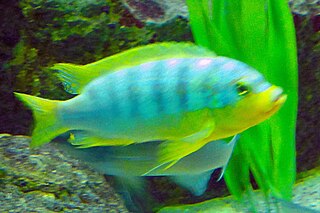 W
WWilliam's mbuna, also known as ice blue zebra mbuna or ice blue zebra or the Pseudotropheus ice blue among the aquarium enthusiasts, is a species of cichlid fish endemic to Lake Malawi where it is only found at Makokola in the southeastern arm of the lake. This species can reach a length of 13.4 centimetres (5.3 in) TL. It can also be found in the aquarium trade. The specific name honours the German ornamental fish importer Alfons Greshake.